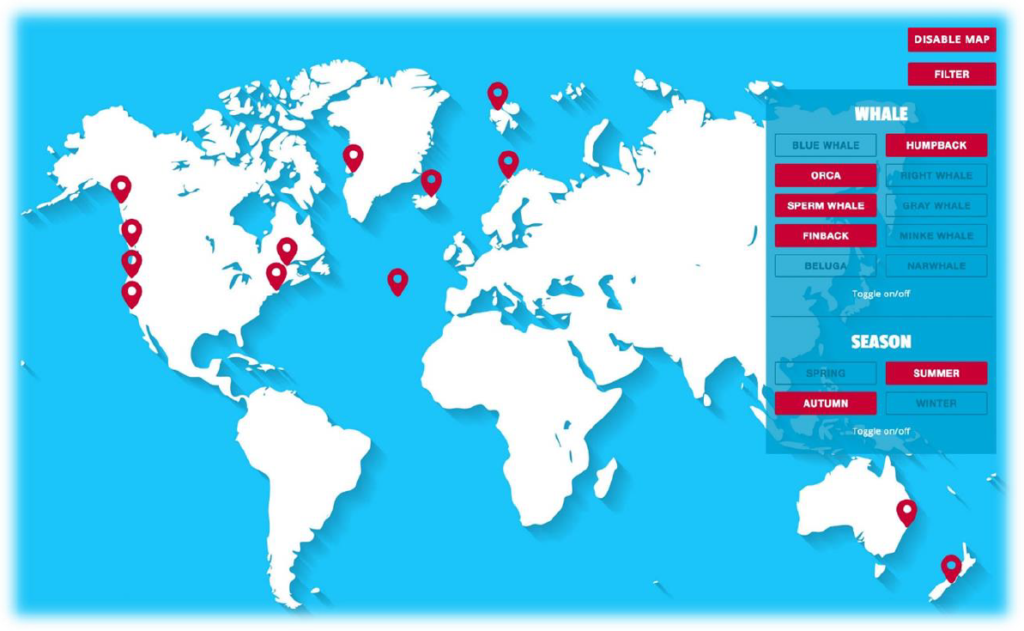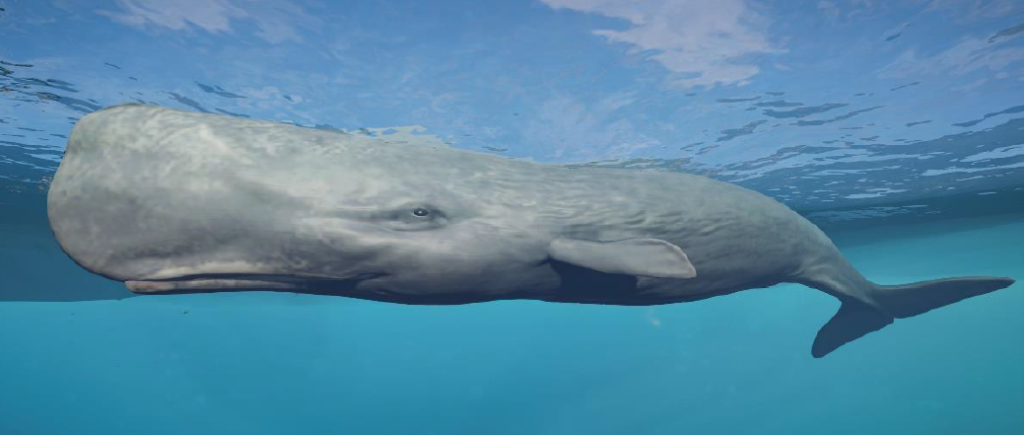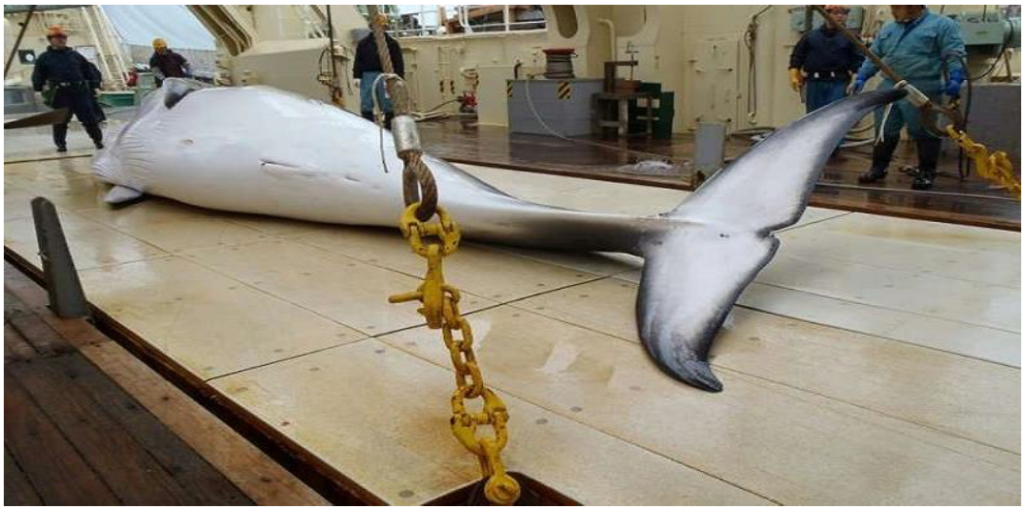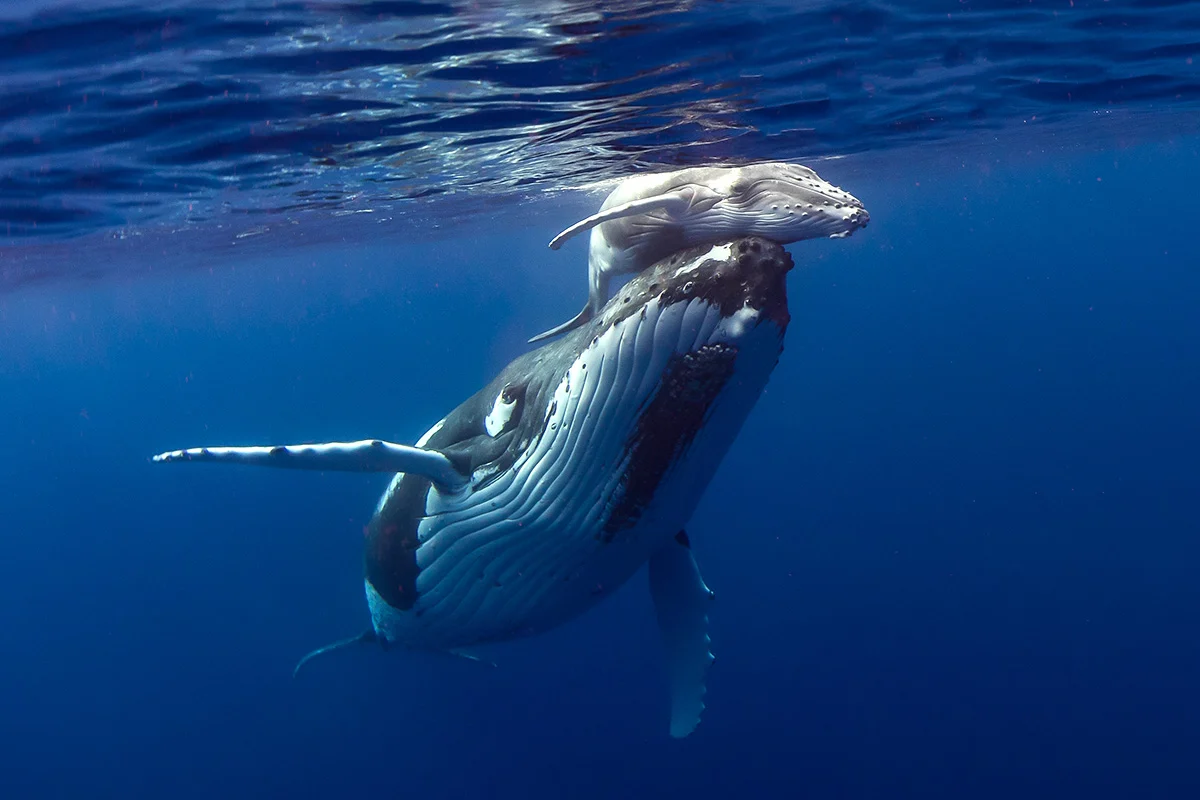Whales (Cetaceans) (Wikipedia, 2022) are the largest animal in the world. They are widely distributed all over the world including the Arctic continent. There are several kinds of whales in the seven oceans. In addition to cold water, some whales prefer to live in warm water areas such as Florida, Hawaii, Australia, the Galapagos Islands, the Bahamas, and the Gulf of Mexico.

When it comes to types of whales, there are a few as mentioned before.
- Beluga Whale
This whale is an arctic and sub-arctic cetacean. This type is known as a social animal. Beluga whales are white and have adorable faces. The USA aquariums own rescued Beluga whales, and they train them to perform in public events. In general, they can be found in coastal waters and around Arctic waters.
- Blue Whale
This whale type is known as the largest animal in the world. Its maximum confirmed length can be identified as 29.9 meters. The lifespan of a well-grown blue whale can be up to 80 – 90 years. They can be found throughout the major oceans. They can be spotted swimming in colder regions such as the Arctic Ocean during feeding season. And they migrate toward tropical waters when mating (Whale Facts).
- Killer Whale
The Killer whale, also known as the Orca, is a type of whale that belongs to the oceanic dolphin family. They are easy to recognize because of the black and white pattern on their body. Orca also can be seen travelling throughout the world’s major oceans. But they are more into cooler climates compared to tropical climates.
- Sperm Whale
The Sperm whale/Cachalot is the largest among toothed whales and the largest toothed predator in the world. A well-grown Sperm whale can live up to 70 years and probably longer. And they can be found in all the oceans. Whereas female Sperm whales can be seen with their newborns near tropical waters. The male sperm whales can be seen travelling back and forth from the colder climates to the warmer climates during mating periods.

- Narwhal Whale
Narwhals are known as the unicorns of the sea because of their “tusk” which possesses a protruding canine tooth. They mostly appear near Canadian arctic and Greenland waters throughout the year. During the winter season, they migrate from the coastal waters to avoid large ice and frozen water areas and again move back to coastal grounds during the warmer spring and summer periods (Whale Facts).
Reproduction
Whales are mammals and they nourish in their mother’s womb through an umbilical cord. The Whale pregnancy period ranges from 9 to 18 months. Unlike other fish in the sea, they give birth to grown whale calves like any other mammal. Whale calves are nurtured with milk from their mothers. Usually, whales breed seasonally in tropical waters. Female whales usually have one calf every 1 to 3 years and the most amazing fact is that whale calves can swim soon after birth.

Threats to Whales
Commercial whaling, ozone depletion, ocean pollution, global warming, and whale watching are considered threats that can affect the whales’ population.
- Commercial Whaling
Commercial Whaling is the process of hunting whales for their body parts as meat, blubber, and tusks (Narwhal whales). Even though whaling is illegal in most countries, Iceland, Norway, and Japan are still engaged in whaling actively. Traditional whalers in the USA use harpoons when hunting whales.

- Ozone depletion
When chlorine and bromine atoms come into contact with ozone in the stratosphere leads to the destruction of ozone molecules. Studies say that a single atom of chlorine has the ability to destroy over 100,000 ozone molecules. This ozone depletion leads to blistered or sunburned skin on whales in the wild.
- Ocean pollution
Ocean pollution is another major threat to whales. The polythene and harmful chemicals dumped into the ocean by humans make the biggest mistake to the whole ocean’s biodiversity. Such polythene gets swallowed by whales alongside their usual food and gets stuck in their digestive system. It kills those whales or gives them bad pain throughout their lives.
- Global warming
Global warming is the overall temperature increment in the whole world. It has led to the ice burg melt in the Arctic region which interrupts whales’ swimming route when the water gets colder. Especially blues whales can be seen during the feeding period near Arctic oceans. When the ice melts with global warming, they lose its destination and get lost.
- Whale Watching
Whale watching is the practice of observing whales in the ocean. People tend to go to the ocean with huge boats to watch whales. This makes whales anxious and might lead to any aggressive reactions from their end. Interrupting their natural behaviour is a threat to whales even if we don’t take it seriously.
Steps towards whale conservation
The easiest step we can follow for our sea giants is to keep the environment and ocean clean. Don’t bring polythene or any kind of plastic to the beach. If you do so, make sure you recycle or dispose them properly. We can support the communities who work on conserving whales and other sea creatures. If you can’t stop the world from interrupting those innocent giants, make sure you don’t interrupt them by yourself. Another big step is reducing the carbon footprint. This means the total amount of greenhouse gases (carbon monoxide, methane) depends on our actions.
“The whales do not sing because they have an answer, they sing because they have a song.”
– Gregory Colbert.
References
- Whale Facts. (n.d.). Retrieved from Whale Facts: https://www.whalefacts.org/where-do-whales-live/
- Wikipedia. (2022, August 05). Cetacea. Retrieved from Wikipedia: https://en.wikipedia.org/wiki/Cetacea
Written by: Rtr. Chamodi Kaveesha
Edited by: Rtr. Imesha Ilangasinghe
